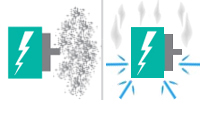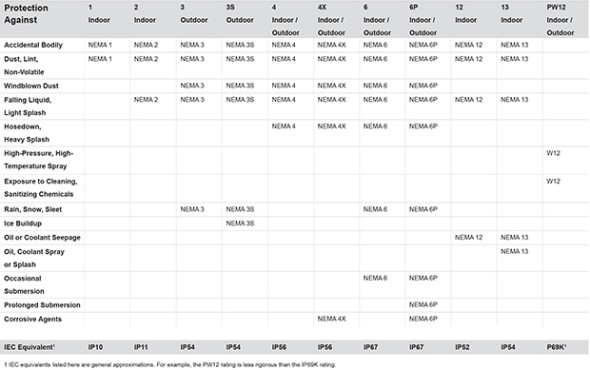Home > Business > Corporate
ABPABPABP CORPORATE09 Dec, 2014 19:16 ISTMake In India Opens $20-Bn Defence Market To Pvt SectorThe private sector is counting on is increase in defence budget in the coming yearsNinad D Sheth
TEXT SIZE : A | A | A
TOOLSe-mail this story print view view only pictures story in single pageshare
Make In India Opens $20-bn Defence Market To Pvt Sector
155 mm advanced Howitzer to replace Indian army's aging Bofors guns (Pic by Reuters)
RELATED STORIES
Dell Launches Latitude Rugged Extreme Devices Trust & Don't Forget To Verify From Specialist To Generalist
In opening up defence equipment manufacture - for long a state monopoly -- the Modi government has created a $20-billion opportunity for the private sector over the next five years.
These include the hull for a nuclear submarine which L&T is building as well as transport aircraft for the Indian Airforce where the Tata group has shown interest.
Add to this the bullet proof jackets currently being tested for the Indian Army to be produced by Gujarat Forensic Science Limited and building corvettes for the navy for which Pipvav defence and ABG shipyards - both private sector firms -- are likely to bid.
The list is getting longer by the day.
This push by the private sector extends to high altitude clothing and the recently approved acquisition of 155 mm Howitzers, 100 of which will be bought off the shelf and at least 350 more made in India with an Indian firm.
There is a excitement as India, the world's largest arms importer, shifts gears to manufacture weapons at home.
Sukarn Singh, Director at Tata Advance Systems, the defence company of the Tata group, puts the opportunity in perspective, "The actual opportunities for Indian companies to manufacture weapons and weapons systems are very large. An entire ecosystem is coming together in the defence equipment market. Defence is a crucial area where make in India will play a large role."
Prasan Firodia, MD Force Motors agrees. "With the new government's focus on 'Make in India', the automobile industry has a great opportunity. Our products at Force Motors are capable of meeting the Defense requirements and expectations. This initiative of indigenisation is a welcome move," says Firodia.
New policies open up specific sectors as government pushes for make in India.
The last union budget allowed 49 per cent foreign direct investment in defence. While this leaves the tricky question of parting with proprietary technology unanswered - it has still led to a rush for joint ventures such as the one between Tata Advance Systems and Airbus for the tender to replace India's ageing Avro aircraft fleet.
Sources in the Defence Ministry say that the new defence minister Manohar Parrikar is keen to get the 'Make in India' model operational in indigenous defence contracts. India has announced that the six submarines that the navy needs will now be made in India and not imported. This is a Rs 70,000-crore order but shipyard capability is for now unavailable for a project of this scale. The private sector could step in and furnish the infrastructure.
An important reason for the Indian defence industry's likely growth is also the so called "defence offset clause" applicable to India's imported weapon purchases.
Any purchase that is above Rs 300 crore in value needs to get at least 30 per cent of the purchase order sourced from local Indian companies. This will allow for both technology absorption and built scale over time.
According to a recent report by Mckinsey, a management consultancy, offsets worth $4 billion have been awarded since the policy came into existence. With big ticket Defence acquisitions now under active consideration, offsets could growth to $10 billion within a decade.
Prof Harsh V, part of the Department of Defence Studies at King's College London, who has worked extensively on India defence industry explains, "After decades of waiting, finally it seems there is an opportunity for the Indian corporate sector to enter the defence industry in a substantive manner. So the excitement is genuine. The Modi government has given indications that it is serious about defence indigenization. It was long overdue and now that a shift from the public to the private sector is happening, it bodes well for the country. The private sector's entry is needed to make the defence sector more efficient and productive. But it will be tough road ahead for the private sector as well. "
One factor that the private sector is counting on is increase in defence budget in the coming and subsequent years. This is likely as India's weapon acquisition will need a planned boost in the defence budget. The military budget is at Rs 2.29 lakh crore ($38.35 billion) for 2014-15, Rs 5,000 crore more than what the previous government agreed in an interim budget earlier this year.
The Maintenance Business
Apart from producing new weapons, there is a huge market in maintenance of current weapon inventory. The armed forces are gradually opening this business up for the private sector.
Home-grown defence firms are looking seriously at the newly opened space for maintenance of military equipment which is likely to be a $5 billion a year opportunity.
Here IAF has a yearly maintenance requirement of about $3 billion while the Navy could outsource about $1 billion military maintenance contracts to private shipyards in 2015. The army too has upgrade and maintenance requirements of an estimated $1 billion a year for its vehicles, weapons and computer networks that will be gradually be opened up to the private sector.
The Software Opportunity
The domestic defence opportunity goes far beyond making hardware. There is a new paradigm to warfare - it's called the revolution in military affairs. This is the warfare of the 21st century and for this software, high speed computing, advanced sensors and remote sensing are the new vistas for the private sector.
These are thought to be worth $2 billion a year and analysts believe are increasing in value. Especially important is the role of private Indian software firms. Infosys for example has a dedicated aerospace team and is focused on developing flight control systems, flight management systems and flat panel cockpit displays for primary flight, navigation and engine information systems are also on offer.
HCL has been active for the last few years in the aerospace domain and has executed about 850 projects in the aerospace sector. It is increasing its defence team and is poised to bid for several defence contracts especially in the aerospace domain where they have expertise.
TCS has a dedicated Aerospace excellence centre with 2000 consultants working on various projects.
The opportunity thus is being leveraged by corporate sector. Currently India imports 70 per cent of its defence needs mostly from Israel, the US and Russia. If that number can be cut even by half over the next ten years it could lead to a domestic military industrial complex and that is a multibillion dollar play.
The Private Sector & Domestic Defence
Bharat Forge: A 155 mm advanced Howitzer to replace Indian army's aging Bofors guns has been domestically manufactured with technology from a Swiss acquisition of the firm Ruag. The firm is getting ready to leverage the 'Make in India' opportunity and has set up a JV with Israeli major Elbit systems and will reportedly develop a mountain howitzer through this joint venture.
Tata Advanced Systems and Airbus - a $2 billion deal to manufacture C295 transport aircraft in India to replace ageing Avros. The Tatas also plan to bid for sensors and rocket launchers for the army and the navy. A separate plan is to make radars for the Navy and the Airforce.
Mahindra & Mahindra has a special division called Mahindra Defence which is making the Axe combat vehicle designed for the Indian Army and the Special Forces of foreign armies. Its 140 HP, four-cylinder diesel engine and Mercedes-Benz transmission deliver high performance in the roughest situations. Lightweight and high-payload, the Axe can carry six crew with full battle loads.
L&T Defence is the leading contender for the six India-made submarines project. It is already involved in the construction of the hull for India's nuclear submarine and has invested nearly a billion dollars in its defence business. It is also in the race to supply the Indian Navy landing platform Docks. These are huge ships meant to compliment amphibious assault missions and with helicopters, troops and assorted mission compatible equipment abord.
Godrej is also very active in the defence sector. It has already produced 40 airframes for the supersonic Brahmos missile which is developed jointly by India and Russia. It has an ordered for another 100 missile frames from Brahmos. Godrej has a specialised division called Godrej Precision systems that concentrates on the maintainance business including assembled parts for defence systems.
Reliance Industries Ltd has tied up with Dassault of France and will likely make a foray in the fighter jets segment
Punj Lloyd is in the race to manufacture combat vehicles for the Indian army a market thought to be worth $1billion over the next five years. It is also concentrating on the big maintenance business that is likely to flow to the private sector as well as value engineering specialized services a fast developing niche.
Wipro is looking to offer its software expertise in the Avionics - Control computers, fuel systems, hydraulic systems, and flight controls market estimated to be in the region of $1 billion a year.
$2.25 billion programme for corvettes for which two private sector Shipyards ABG shipyard, and Pipvav defence are likely to bid.
Force Motors, the Pune-based automobile firm is venturing into the defence business with a slew of offerings including a military Ambulance and an all terrain Force 4x4 vehicles. It has won the tender for 450 light combat Vehicles for the Indian Army. It will supply the Trishul combat vehicle.
According to a recent report by Mckinsey, a management consultancy, Offsets worth $4 billion have been awarded since the policy came into existence.
India's defence budget is likely to continue to grow by 10 per cent for capital expenditure each year over the next five years.
....
Raghunandan JAGDISH
CEO & Director
Nandan GSE Pvt Ltd
www.nandan.co.in. raghu@nandan.co.in
>>> +91-9322692934 (send me SMS)
Forgive Brevity... composed on my handphone
NANDAN does not accept liability for the integrity of this message or for any changes, which may occur in transmission due to network, machine or software failure or manufacture or operator error. Although this communication and any files transmitted with it are believed to be free of any virus or any other defect which might affect any computer or IT system into which they are received and opened, it is the responsibility of the recipient to ensure that they are virus free and no responsibility will be accepted by NANDAN for any loss or damage arising in any way from receipt or use thereof.



